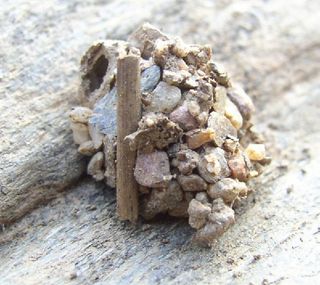
2 Newfound Wasps Parasitize Ant-Eating Spiders

Spiders in the genus Zodarian are an ant's worst nightmare. These arachnids sleep during the day in igloo-shaped compartments under rocks and dead wood, but at night emerge to stalk and feed on ants, their sole source of food. Several spiders in the genus (the taxonomic grouping above species) even look like ants.
But these arachnids have a devious enemy: Two newly identified species of wasps make a living by ambushing these spiders and laying eggs on their bodies, a study published recently in the journal ZooKeys found.
After hatching, the wasp larva slowly devours the spider, before developing into an adult in the safety of the spider's former home. One of the species spins a cocoon before emerging as an adult.
The female wasp of both species attacks the spiders during the day, piercing the spider's home with its long ovipositor, a stinger-like appendage used for laying eggs. The two new species of tiny parasitic wasps — Calymmochilus dispar and Gelis apterus — were found in Portugal.

There are many species of wasps that prey upon spiders. These "parasitoids attack a number of spiders ranging from ground-dwelling and fast-moving hunters like wolf spiders to web spiders such as orb-web weavers that stay on webs during most of their life," study author Stanislav Korenko, a researcher at the Czech University of Life Sciences, said in a statement.
Reach Douglas Main at dmain@techmedianetwork.com. Follow him on Twitter @Douglas_Main. Follow OurAmazingPlanet on Twitter @OAPlanet. We're also on Facebook and Google+.
Sign up for the Live Science daily newsletter now
Get the world’s most fascinating discoveries delivered straight to your inbox.

